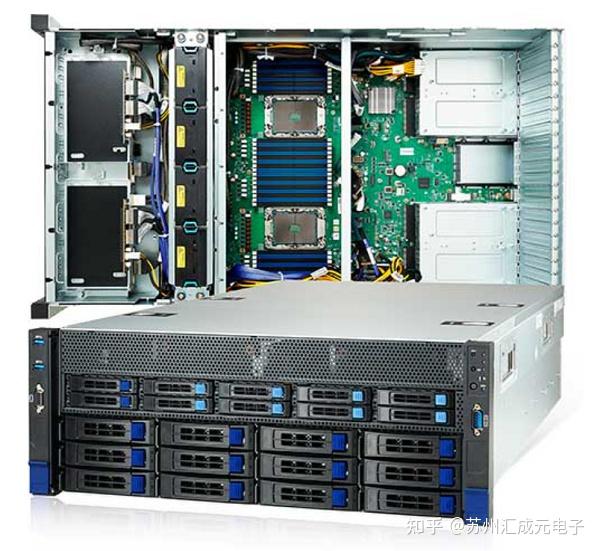Categorization:Harness Component
In the internal design of AI servers, edge computing devices, and various high-performance systems, the selection of high-speed interconnect cables is often one of the most challenging aspects for engineers. Common solutions include OCuLink, SlimSAS, PCIe cables, as well as the rapidly emerging ultra-thin coaxial cables (Micro Coaxial Cable) in recent years.
Many people who are developing AI hardware solutions ask me: Which one should be chosen for the internal connection inside the device, OCuLink, SlimSAS, PCIe cable, or ultra-thin coaxial cable?
On the surface, they all can achieve high-speed transmission, but the differences in performance, flexibility, and wiring difficulty are very obvious in different application scenarios. So, what are the respective advantages and disadvantages between them?
One, characteristics of three mainstream high-speed wire materials
1. OCuLink:
This is a high-speed connection solution with a high degree of interface standardization, commonly used in high-speed interconnection scenarios such as GPU and motherboard, storage expansion, etc. It has sufficient bandwidth and strong compatibility, but the cables are relatively thick and lack flexibility, making them unsuitable for narrow spaces.
2. SlimSAS:
SlimSAS is known for its miniaturization and high-density interface design, which is very suitable for internal storage interconnection in servers. With compact layout and stable signal transmission, it is slightly challenging in complex cabling environments due to limited thermal dissipation and flexibility.
PCIe Cable:
As an extension of the PCIe bus, it has strong point-to-point transmission capabilities and high protocol compatibility, but its thick wire diameter and difficulty in bending make it not very friendly to the compact structure of AI devices.
The common points of these three types of cables are standardization, maturity, and ease of expansion, but when they are used internally in compact AI systems, they tend to be somewhat "bulky," and are limited in terms of space utilization and wiring flexibility.
Unique Advantages of Ultra-Fine Coaxial Cable (Micro Coaxial Cable)
In miniature AI modules, camera modules, or edge computing devices, an increasing number of engineers tend to choose ultra-thin coaxial cables. The main reasons are as follows:
2.1 High bandwidth, low loss
Extremely fine coaxial cables can stably support high-speed signal transmission such as MIPI, PCIe Gen5/Gen6, and effectively avoid issues like eye diagram collapse and reflections.
2.2 Excellent flexibility and clothability linear
The wire diameter is only about 0.2~0.3mm, which can be flexibly routed in extremely compact body structures, especially suitable for close-range connections between chips and modules.
Excellent anti-interference performance
The coaxial structure naturally possesses excellent shielding characteristics and can maintain signal integrity in AI high-frequency computing environments.
2.4 Lightweight Design
Compared with traditional high-speed cables, ultra-fine coaxial cables are lighter and are very suitable for the design requirements of mobile devices and edge terminals.
In short, when a project requires high-speed transmission, small size, and flexible routing at the same time, extremely thin coaxial cables are a more suitable solution.
How to choose? The scenario determines the answer.
Different application scenarios have different requirements for cables:
3.1 If it is a standard expansion between cards (such as GPU and motherboard interconnection), OCuLink or PCIe cable is the preferred choice, as standardized interfaces can reduce design risks.
3.2 If it is the storage interconnection inside the computer case, SlimSAS has an advantage due to its high-density structure.
3.3 For precise interconnections inside AI chips, camera modules, or acceleration cards, extremely thin coaxial cables are the best choice. They not only solve the problem of limited space but also balance high speed and stability.
In general, OCuLink, SlimSAS, PCIe cables, and ultra-thin coaxial cables all have their own advantages: the former excels in terms of expandability, standardization, and interface compatibility; while ultra-thin coaxial cables are more in line with the design trends of the new generation of AI devices in terms of flexibility, miniaturization, and high-speed transmission.
From my actual experience, as AI devices continue to shrink in size and increase in speed, the value of ultra-thin coaxial lines will only become more and more prominent.
I am[Suzhou Hui Cheng Yuan Electronics], focusing on the research and development and customization of high-speed signal cable harnesses and extremely fine coaxial cable harnesses, committed to providing customers with high reliability and high-performance interconnection solutions. If you are facing cable selection or signal optimization issues, welcome to contact:Manager Zhang 18913228573 (WeChat same number)。